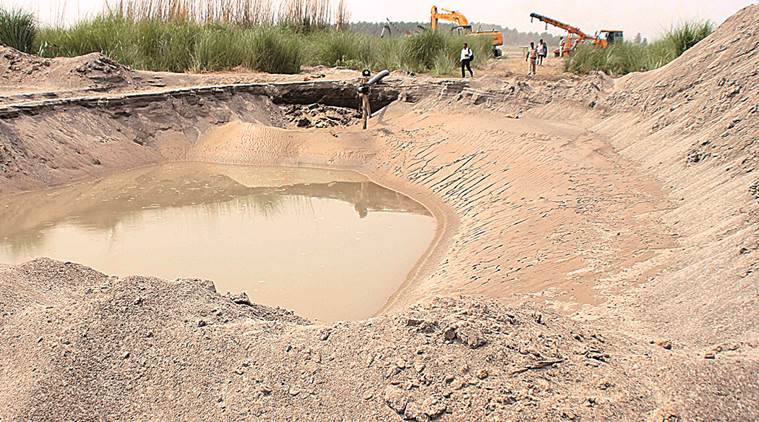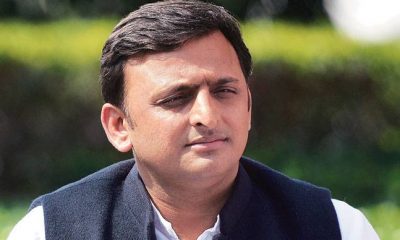Feature
UP illegal sand mining: ED summons 4, including IAS officer, SP MLC

The Enforcement Directorate (ED) on Friday summoned senior IAS officer B. Chandrakala for questioning in connection with an illegal sand mining case in Uttar Pradesh, officials said.
Chandrakala, the former District Magistrate of Hamirpur district, has been summoned for questioning to the ED office in Lucknow, a senior agency official told.
A CBI FIR on which the ED based its case has alleged that Chandrakala as the Hamirpur District Magistrate had granted several lease in violation of the Allahabad High Court orders which had ratified an e-tender policy.

Beside, Chandrakala, the financial probe agency has also summoned three more people, including the Samajwadi Party MLC Ramesh Kumar Mishra for questioning on January 28.
The ED summon comes a day after it registered a case under the provisions of the Prevention of Money Laundering Act (PMLA) based on a Central Bureau of Investigation (CBI) case in connection with its ongoing probe into illegal sand mining and role of bureaucrats and politicians in Uttar Pradesh.
On January 5, the CBI had raided Chandrakala’s homes in Lucknow and Noida and seized two bank accounts and one locker, besides recovering some documents. Mishra’s house in Kanpur was also searched.

It was on January 2, when the CBI had registered the case against 11 people, including Chandrakala, miner Adil Khan, geologist/mining officer Moinuddin, Mishra and his brother, besides Sanajy Dikshit who contested the 2017 Assembly polls on the Bahujan Samaj Party (BSP) ticket and his father.
The then Chief Minister Akhilesh Yadav had granted the mines leases to 14 people in 2013 in Hamirpur district against the High Court’s order.
On January 7, the CBI released a list of 22 leases cleared by the Samajwadi Party chief, who was also the Mining Minister during that period, and was later succeeded by Gayatri Prasad Prajapati.
Entertainment
Meghalaya Reserves Legalized Gambling and Sports Betting for Tourists

The State Scores Extra High on Gaming-Friendly Industry Index
Meghalaya scored 92.85 out of 100 possible points in a Gaming Industry Index and proved to be India’s most gaming-friendly state following its recent profound legislation changes over the field allowing land-based and online gaming, including games of chance, under a licensing regime.
The index by the UK India Business Council (UKIBC) uses a scale of 0 to 100 to measure the level of legalisation on gambling and betting achieved by a state based on the scores over a set of seven different games – lottery, horse racing, betting on sports, poker, rummy, casino and fantasy sports
Starting from February last year, Meghalaya became the third state in India’s northeast to legalise gambling and betting after Sikkim and Nagaland. After consultations with the UKIBC, the state proceeded with the adoption of the Meghalaya Regulation of Gaming Act, 2021 and the nullification of the Meghalaya Prevention of Gambling Act, 1970. Subsequently in December, the Meghalaya Regulation of Gaming Rules, 2021 were notified and came into force.
All for the Tourists
The move to legalise and license various forms of offline and online betting and gambling in Meghalaya is aimed at boosting tourism and creating jobs, and altogether raising taxation revenues for the northeastern state. At the same time, the opportunities to bet and gamble legally will be reserved only for tourists and visitors.
“We came out with a Gaming Act and subsequently framed the Regulation of Gaming Rules, 2021. The government will accordingly issue licenses to operate games of skill and chance, both online and offline,” said James P. K. Sangma, Meghalaya State Law and Taxation Minister speaking in the capital city of Shillong. “But the legalized gambling and gaming will only be for tourists and not residents of Meghalaya,” he continued.
To be allowed to play, tourists and people visiting the state for work or business purposes will have to prove their non-resident status by presenting appropriate documents, in a process similar to a bank KYC (Know Your Customer) procedure.
Meghalaya Reaches Out to a Vast Market
With 140 millions of people in India estimated to bet regularly on sports, and a total of 370 million desi bettors around prominent sporting events, as per data from one of the latest reports by Esse N Videri, Meghalaya is set to reach out and take a piece of a vast market.
Estimates on the financial value of India’s sports betting market, combined across all types of offline channels and online sports and cricket predictions and betting platforms, speak about amounts between $130 and $150 billion (roughly between ₹9.7 and ₹11.5 lakh crore).
Andhra Pradesh, Telangana and Delhi are shown to deliver the highest number of bettors and Meghalaya can count on substantial tourists flow from their betting circles. The sports betting communities of Karnataka, Maharashtra, Uttar Pradesh and Haryana are also not to be underestimated.
Among the sports, cricket is most popular, registering 68 percent of the total bet count analyzed by Esse N Videri. Football takes second position with 11 percent of the bets, followed by betting on FIFA at 7 percent and on eCricket at 5 percent. The last position in the Top 5 of popular sports for betting in India is taken by tennis with 3 percent of the bet count.
Local Citizens will Still have Their Teer Betting
Meghalaya residents will still be permitted to participate in teer betting over arrow-shooting results. Teer is a traditional method of gambling, somewhat similar to a lottery draw, and held under the rules of the Meghalaya Regulation of the Game of Arrow Shooting and the Sale of Teer Tickets Act, 2018.
Teer includes bettors wagering on the number of arrows that reach the target which is placed about 50 meters away from a team of 20 archers positioned in a semicircle.
The archers shoot volleys of arrows at the target for ten minutes, and players place their bets choosing a number between 0 and 99 trying to guess the last two digits of the number of arrows that successfully pierce the target.
If, for example, the number of hits is 256, anyone who has bet on 56 wins an amount eight times bigger than their wager.


















